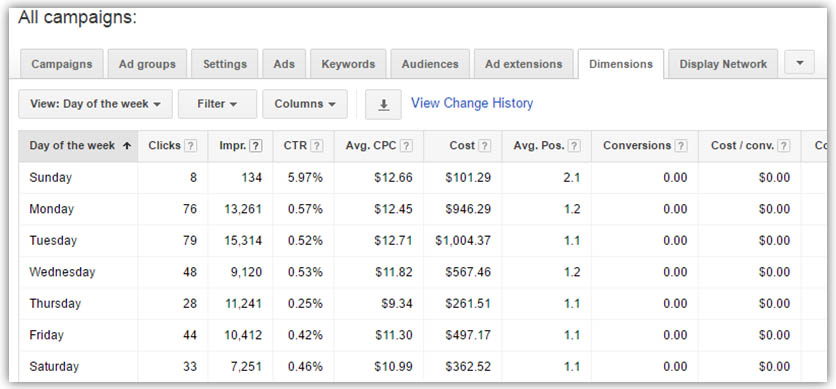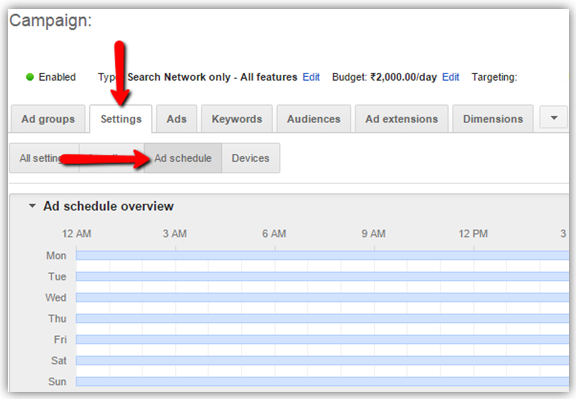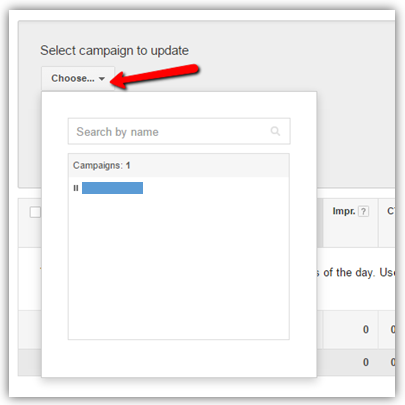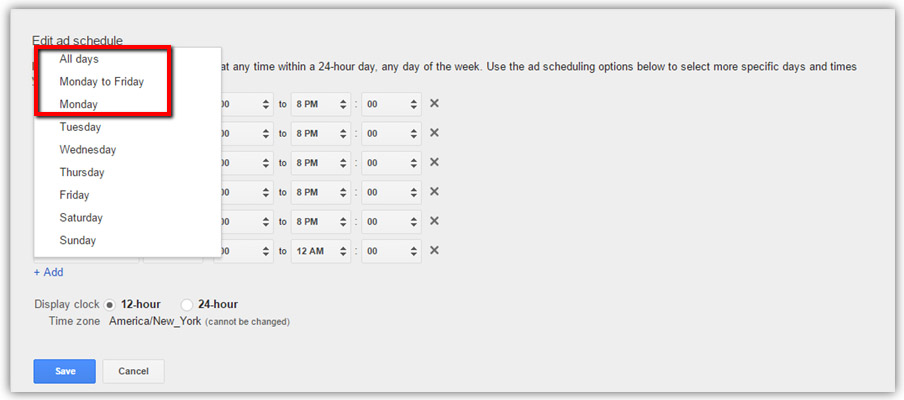Ad scheduling is also known as “day-parting.” It is one of the most important features of Google Ads, which lets you schedule your campaign ads for specific hours of a day or days of a week. So that you could reach out your potential customers at the right time when they are more likely to perform an action or convert. This can help to increase conversion rate. Google Ads also gives you the power to adjust your bids based on hour of day and day of the week cycles in campaign performance.
Right thing at the right time can make your business healthy and strong. Suppose you are running a business, which functions only on specific days of a week and not on the weekends. Then, why would you run your Google Ads campaign on the weekends too. It actually doesn’t make sense of wasting your money on clicks that will not convert into leads. In that case you can always go for ad scheduling or day parting. You can outsource lead generation services to convert your user into a customer.
So, let's discuss ad scheduling in detail since it is essential for you to understand as an online advertiser to offer best-in-class digital marketing services to your clients.
How ad schedule works?
Ad schedules run on a weekly basis. You just need to set your ppc campaign according to your business requirement and how you want your campaign to function. These settings are directed to Google to specify when to run your campaign, thus your ads won’t run outside the time range you specify. It will be very helpful for PPC campaign analysis and also helpful to gain better audience reach.
In Google Ads, not only you can choose the days of the week on which you want your ads to run but it also lets you customize time for each day. Not only that, it allows you to create multiple ad schedules too for each day you schedule. For example: Monday 8:00 AM – 10:00 AM and Monday 1:00 PM – 5:00 PM i.e. same day with multiple ad schedules. Moreover, you can do bid adjustments for each and every single time block that you create.
Also you must incorporate conversion tracking and call tracking for your campaign, this will help you find from where the conversions are coming and when they are taking place. Once you start conversion tracking, soon you’ll find out people’s time of taking intended actions.
Few steps before setting up ad schedule for your Google Ads campaign
Analysis has always been cost-effective for business strategies. And therefore, I would recommend you to go for analysis before you set up an ad schedule for your campaign. Below are the methods for analyzing your campaign performance. So that you could get effective and improved results.
• Open the campaign for which you want to enable this feature, and click the “dimensions tab”.

• In the dimensions tab click over the tab “view day” and scroll down to “Time”. Now there will be few options offered from which you can choose. But then again I’d say that it’s a better option to concentrate on “day of the week” and “hour of day”.

• Then you need to examine which days and times of the day are most productive and are helpful in accomplishing your PPC goals. Never create an ad schedule based on any arbitrary pattern that doesn’t have probability to repeat. Always make sure the amount of time you are considering should be statistically significant because if they are not so it can harm your account.

How to set up Google Ads Ad scheduling?
• After analyzing your campaign performance, it’s time to create a distinctive ad schedule for your campaign. To do so, select campaigns> settings> ad schedule in Google Ads.

• Select “+ AD SCHEDULE” tab to create a new ad schedule. After creating your ad schedule you can custom “set bid adjustments” to increase or decrease bids on specific hours of day or days of the week according to their converting times.

• Now select your intended ad campaign.

• Click + Create custom schedule.

• Decide and select what time and day of the week you want your ads to appear for your campaign. There are three options for which you can go:
All days- This means that your ads will be displayed 7 days of a week i.e. from sunday to saturday.
Monday to friday- As this option itself describes that your ads will be displayed from Monday to Friday only and not on the weekends i.e. sunday and saturday.
Third option is for a specific day, if you want your ads to function only on some particular days. You can select exact days and hours as per your necessity. You can also select more than one day for ad scheduling. This will help you to do remarketing of products or services on the basis of different data on different days.

Time zone is where Ad scheduling can be tricky if you don’t pay attention. It accepts your account’s time zone by default. And therefore, it is good to first check what time zone your account is set for and then identify the time zone difference between the countries you want to target.
• Now click the “save” button to apply your ad schedule.
From the above steps you must have understood, setting ad schedule for your campaign is a simple process. But don’t forget to analyze your campaign performance once in a month to compare past performance and seasonal fluctuations, in order to adjust your ad schedule accordingly. Google Ads gives you this option to go back and change ad schedule for your campaign whenever it is required.
Summary
Right approach to Google Ads ad schedules and scheduled bid adjustments can make an immense impact on your Google Ads campaign performance. Soon you will observe a huge difference particularly in certain market niches if you follow these best practices. And I’m sure this will kill your Google Ads profitability. When you avail of white label PPC services, the PPC specialists work on ad scheduling. They also assist with white label search ads, white label mobile ads, white label video ads, white label guest posting services, etc. and maximize advertising ROI.
